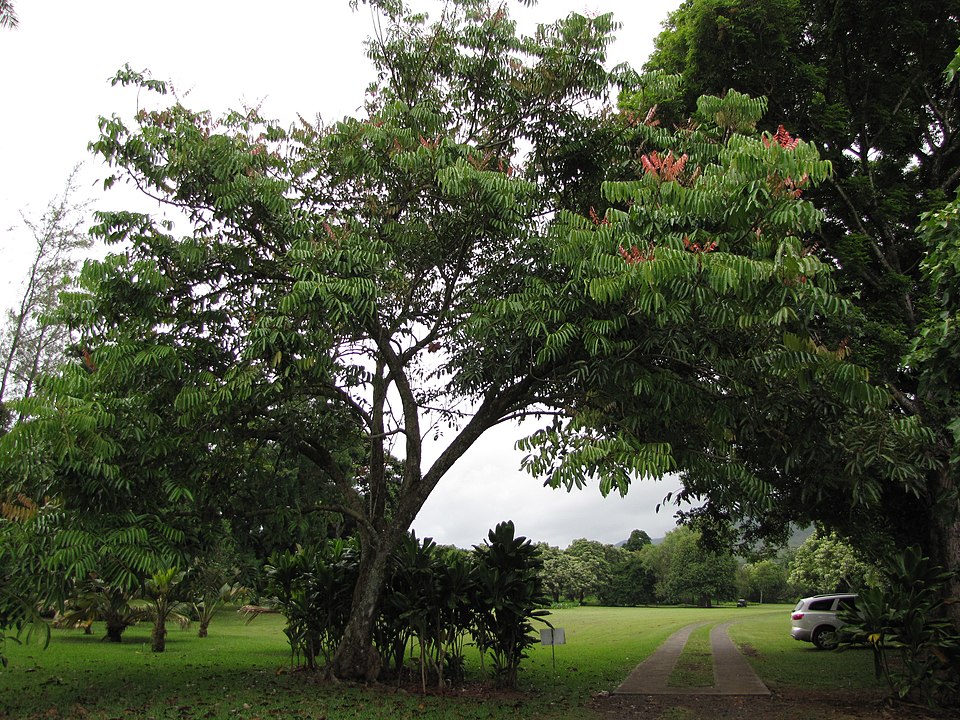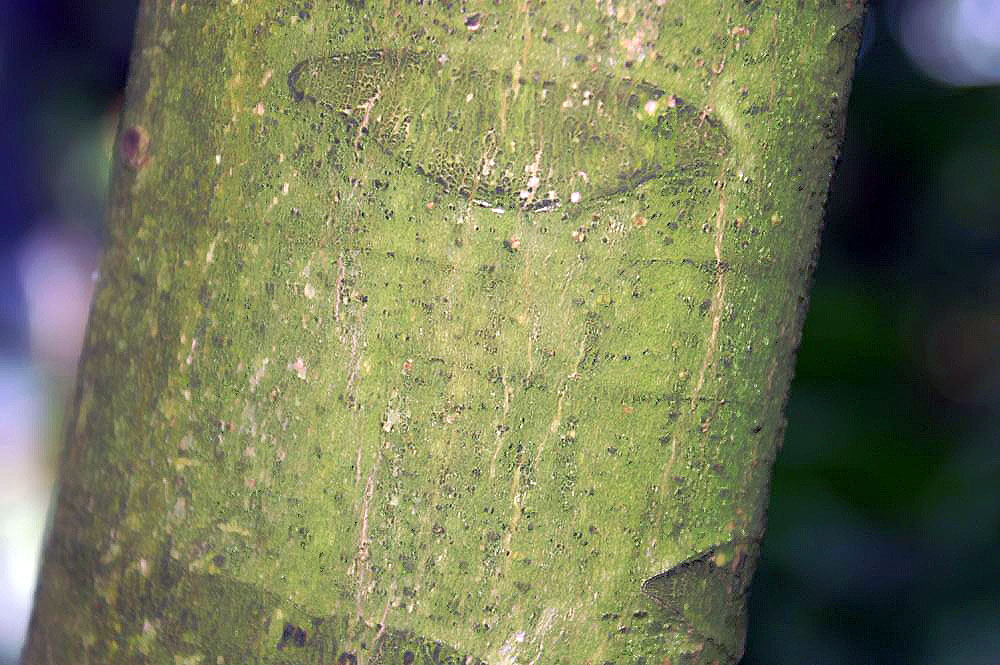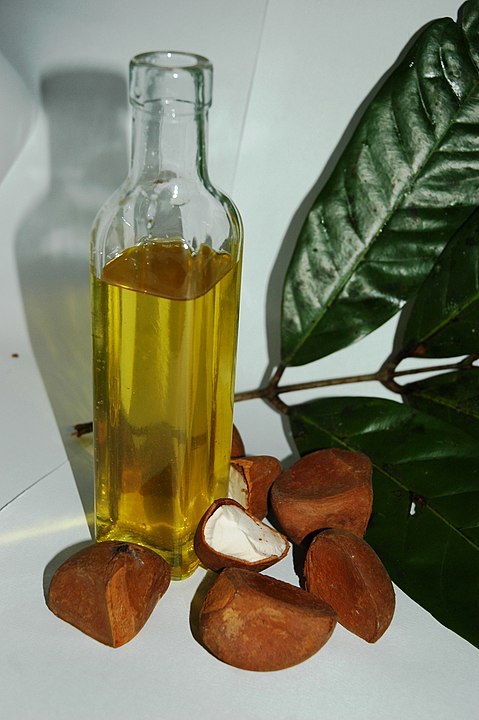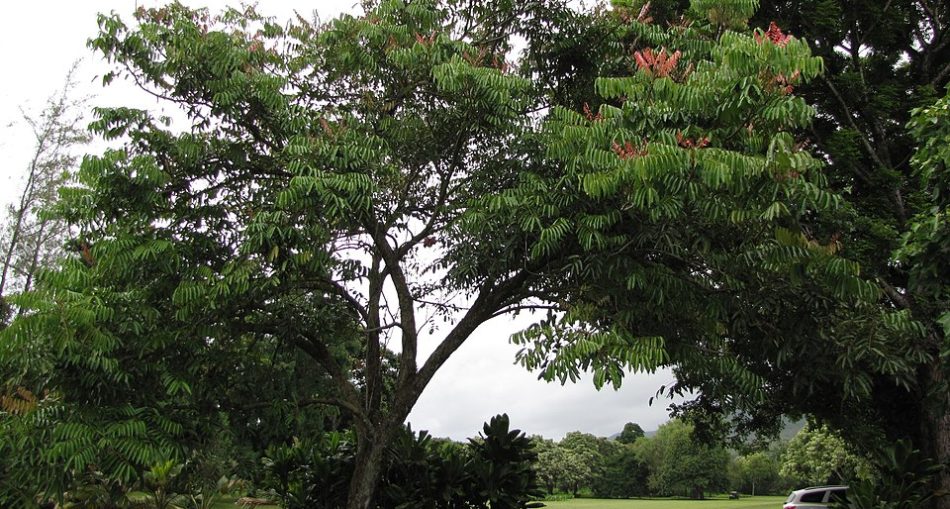Crabwood trees are a common sight in the hinterland regions of Guyana. These magnificent trees can be found growing in the rainforest canopy, along rivers, on low hills and flooded or in swampy locations. If you are living along the coastland of Guyana, you may not have heard about the Crabwood tree. With the exception of its timber, crabwood trees are renowned for its andiroba or crab oil. The is the sole source of the famous crab oil which has a great many medicinal uses. The scientific name of Crabwood is Carapa guianensis but the tree is also known as andiroba.

Crabwood Tree – Photo By Forest & Kim Starr, CC BY 3.0 us, https://commons.wikimedia.org/w/index.php?curid=71902307
Origin of Crabwood
Crabwood is native to Guyana, the Amazon Region, Brazil and some parts of Central America, and the Caribbean like Trinidad. Crabwood trees can be found throughout Guyana, mainly in Region One (Barima-Waini) and Region Two (Pomeroon-Supenaam). Large numbers of these trees can be found across the entire country including at Mabura and Iwokrama.
Scientific Classification of Crabwood
- Kingdom: Plantae
- Clade: Tracheophytes
- Clade: Angiosperms
- Clade: Eudicots
- Clade: Rosids
- Order: Sapindales
- Family: Meliaceae
- Genus: Carapa
- Species: C. guianensis
Description of Crabwood
Carapa guianensis or Crabwood is a tall, dense tree that grows about thirty-five (35) to fifty-five (55) metres tall. It can be found in tropical rainforests near waterways. The trunks of Crabwood trees are usually straight and circular with diameter sizes of two hundred (200cm) metres. Branches start growing from heights ranging from twenty (20) to thirty (30) metres. The bark is typically light grey to greyish brown or dark brown, sometimes reddish and flakes into horizontal strips. the young trees produce taproots but larger trees become surface rooted. the fruit of the Crabwood tree is a wood capsule, made of four-lobed each of which contains two (2) to four (4) seeds. Seeds are pale brown in colour, smooth and angular.

Crabwood Stem – Photo by: By Photo by David J. Stang – source: David Stang. First published at ZipcodeZoo.com, CC BY-SA 4.0, https://commons.wikimedia.org/w/index.php?curid=60993948
Crabwood Timber
The Crabwood Tree is not only famous for its oil, but also for its mahogany-like timber. The colour of its heartwood ranges from pale pink to rich red-brown when freshly sawn. However, it later darkens to a uniform dull reddish-brown. Crabwood resembles plain mahogany in appearance but does not have its natural lustre. Sapwood is typically pale brown or oatmeal coloured, and not always defined sharply. The texture of its wood is medium to coarse while its grain, sometimes interlocked, is generally straight.
Processing of Crabwood Timber
- Drying – Crabwood dries slowly but fairly well. It is prone to splitting in the initial drying stages.
- Working – Can be sawn without difficulty, however, interlocked grain makes planing difficult. Crabwood works easily and turns well, with a smooth finish.
- Assembly – Glues and holds nails well. It has a tendency to split on nailing.
- Finishing – Takes staining and polishing satisfactorily.
Uses of Crabwood

Crabwood Oil or Andiroba Oil – Photo By P. S. Sena – Own work, CC BY-SA 4.0, https://commons.wikimedia.org/w/index.php?curid=37381309
- Crabwood trees are famous for the crab oil or andiroba oil, similar to neem oil. This oil is extracted from the fallen seeds which are collected from rivers and beaches after being shed. Crab oil used as a mosquito repellent by making and burning an oilseed ball or mixing it with annatto or dye and applying the paste to prevent mosquito bites.
- In Brazil, oil and fats from Crabwood are used to protect furniture from termites and other wood-chewing insects.
- Crab\oil is used hair oil for the treatment of dandruff.
- It is also used as an anti-wrinkle cream.
- as a massage oil, it treats rheumatism and arthritis.
- The oil is even considered a laxative among many others.
- Locally, crab oil to treat a condition known locally as Thrush
- In Guyana, some pharmacies and communities are processing Crabwood oil into candles, soap, and insecticidal washes for our local market.
- Crabwood is highly valued for high-quality furniture and cabinetwork, stairs and flooring, and as a veneer for furniture, interior work and plywood.
- The name andiroba is from the Nheengatu language where “nhandi rob”, means bitter oil.
- Crabwood is highly valued for high-quality furniture and cabinetwork, stairs and flooring, and as a veneer for furniture, interior work and plywood.
Interesting Tip
- The fruits of Crabwood trees are eaten by the agouti, acouchi and even the brocket deer.
- The Crabwood tree has similar properties to mahogany, one most expensive woods in Guyana.
- The oil contained in the almond andiroba is light yellow and extremely bitter and solidifies into a jelly in temperatures below 25 °C.
About Crabwood
Guyana is one of the only countries in which Crabwood or Carapa guianensis can be found. The highly sought after and prized andiroba oil or Crabwood oil is produced right here in Guyana. Crabwood lumber and oils can be very useful. Whether you are planning to build furniture, stairs, reduce dandruff, fix your bowels or repel annoying mosquitoes consider the Crabwood tree and its many byproducts.
Article References
- https://en.wikipedia.org/wiki/Carapa_guianensis
- http://guyanachronicle.com/2012/11/24/green-cornercrabwood
- https://www.stabroeknews.com/2012/04/29/features/crabwood-carapa-guianensis/







